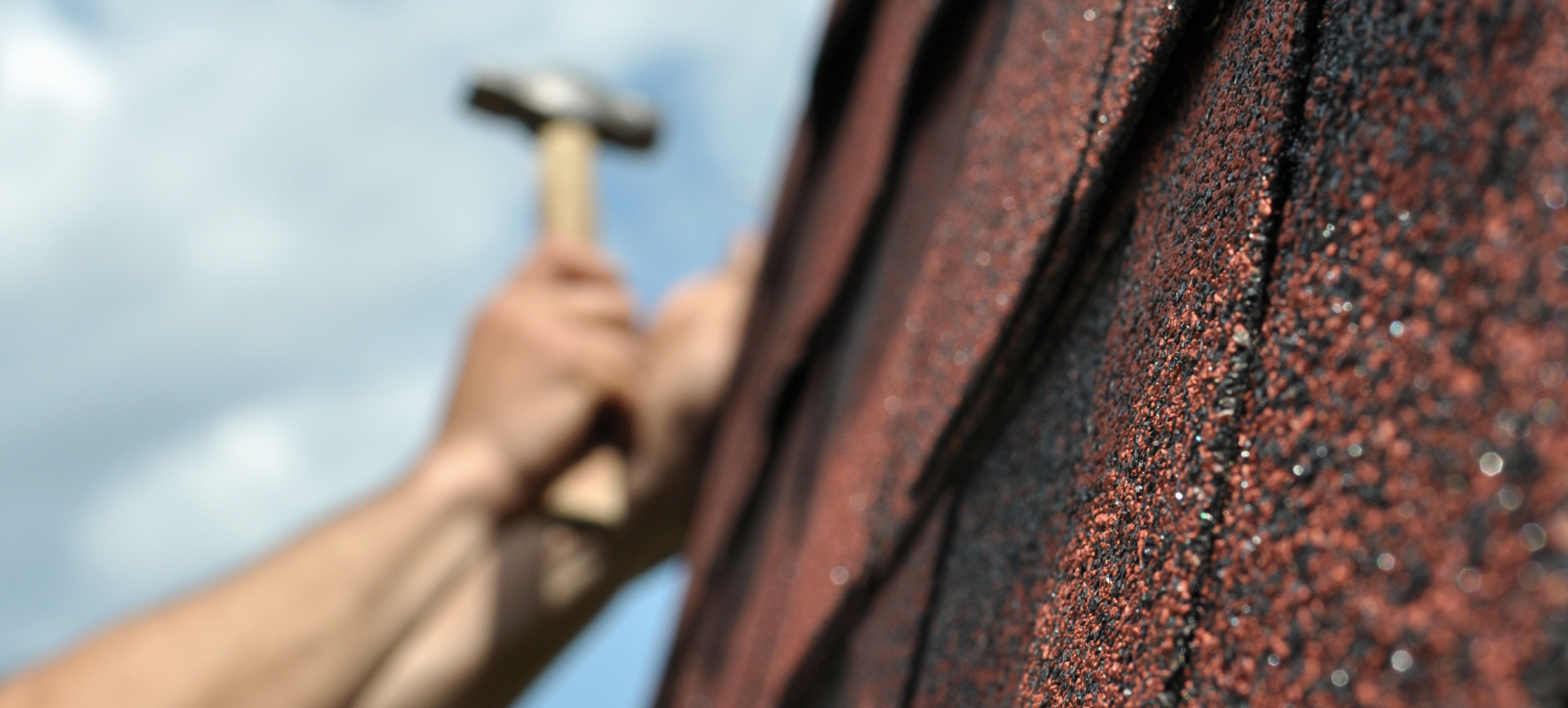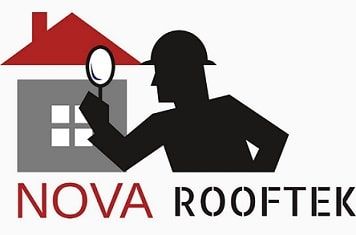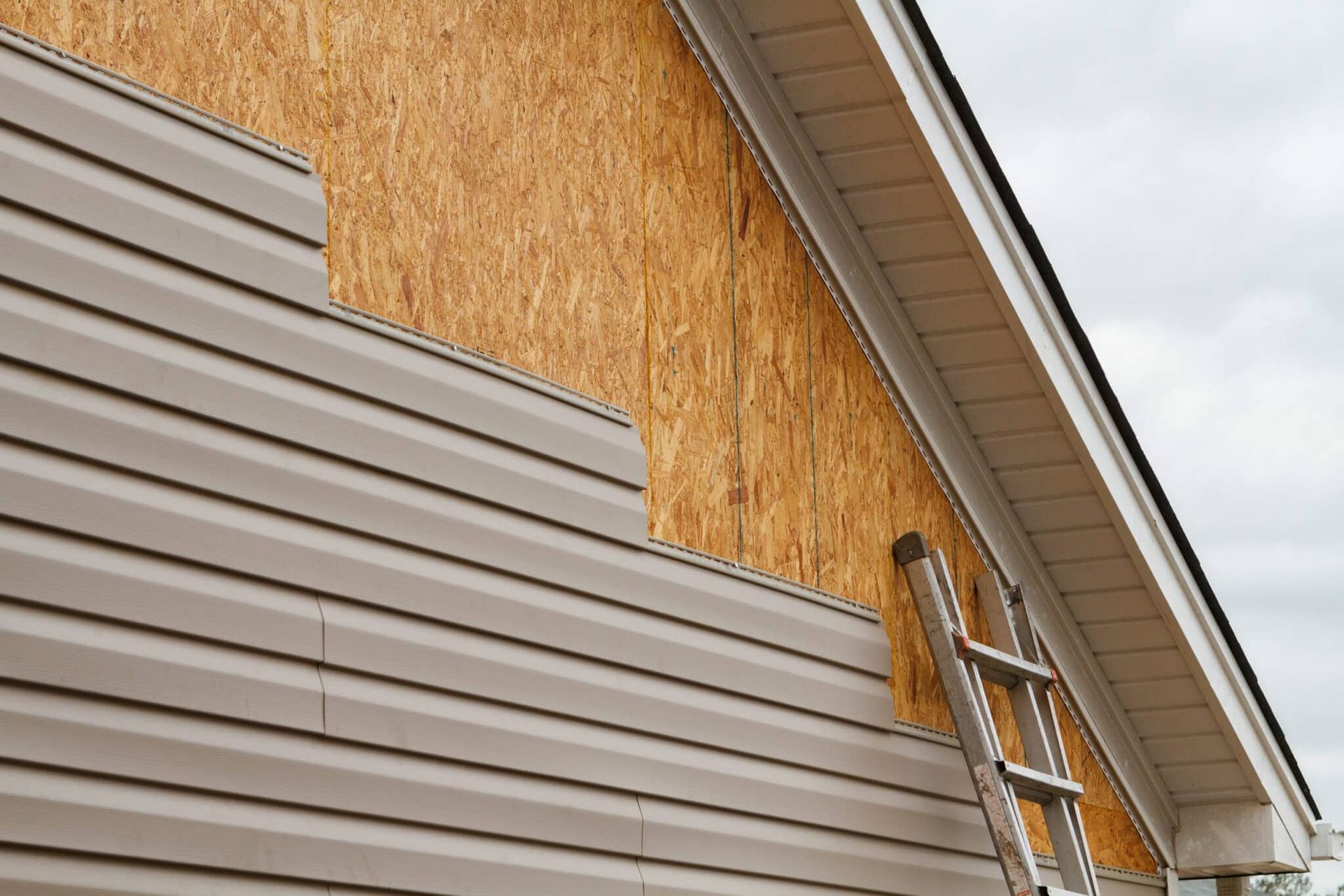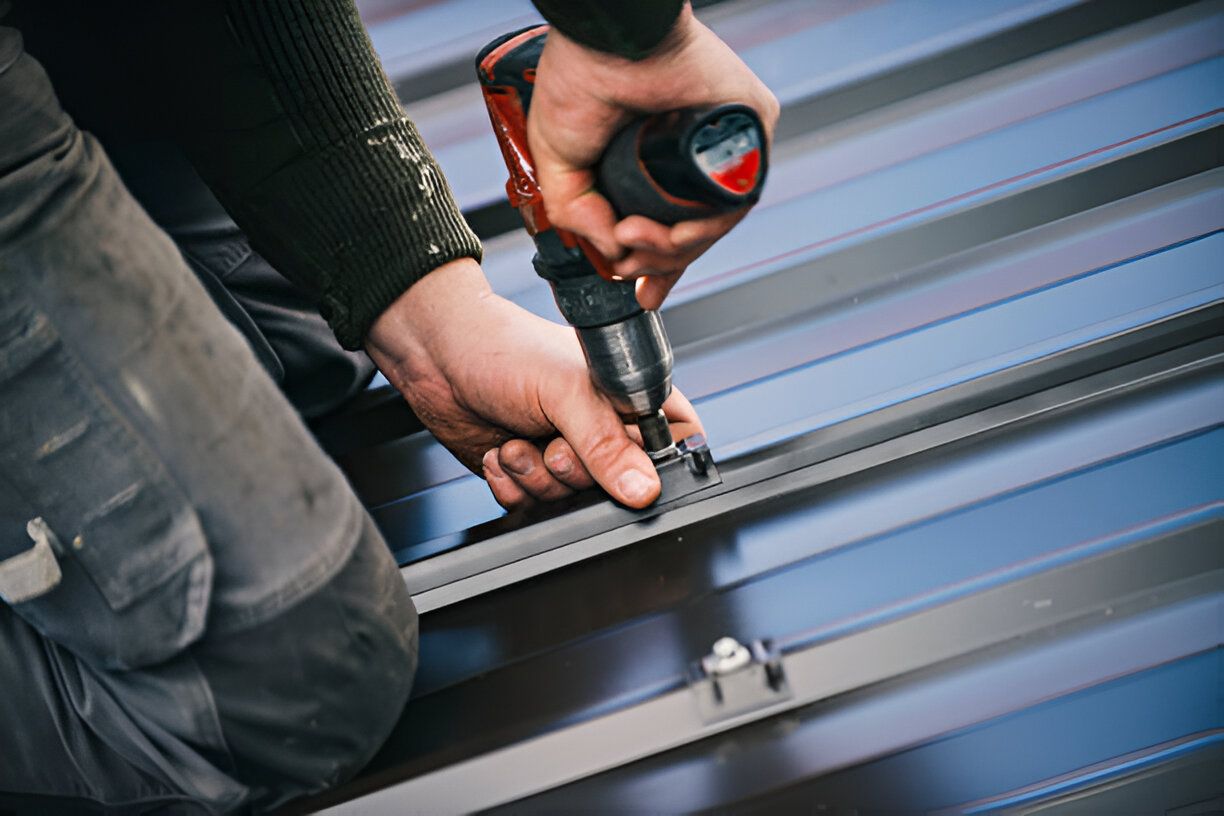What Is the Most Common Roof Repair?

Thomas Valera // Owner of NOVA ROOFTEK

What Is the Most Common Roof Repair and How to Fix It?
When it comes to common roof repairs, damaged shingles or tiles are the most common issue homeowners face. In fact, what is the most common roof repair often involves these problems, which arise due to weather conditions, aging, and environmental factors.
Addressing damaged shingles promptly is crucial to prevent more severe damage to your home. In this article, we’ll explore why this repair is so frequent, how to identify damaged shingles, and the steps you can take to fix them, including when to call a roofing contractor.
Key Takeaways
- Damaged shingles or tiles are the most common roof repair, often caused by storms, debris, and age; addressing them promptly can prevent costly structural damage.
- Regular maintenance and inspections are key to identifying and fixing issues like roof leaks and poor ventilation before they escalate into bigger problems.
- Hiring a professional roofing service, like NOVA ROOFTEK, ensures quality repairs and maintenance, protecting your investment and extending the life of your roof.
Damaged Shingles or Tiles
Frequently, homeowners must address the issue of damaged shingles or tiles on their roof. These problems typically occur due to harsh weather conditions, debris impact, prolonged sun exposure, and natural wear over time. Intense winds can dislodge or break your roof’s shingles while animals and tree falls contribute to damage. Neglecting these impaired roof shingles can result in greater complications like decayed decking material and potential structural harm. Immediate repairs are crucial for preventing such deterioration from worsening.
Compromised roofing materials leave a home exposed to additional risks that could be detrimental if overlooked. This neglect may not only incur more expensive repairs, but also threaten the overall stability of your residence’s structure. Homeowners should act swiftly by consulting with professionals skilled in local roof repair at once when they detect compromised or absent roofing components.
It is important to understand that acting promptly upon identifying any damages can significantly reduce future hassles associated with extensive roof maintenance needs.
Identifying Damaged Shingles or Tiles
Commencing roof repair involves pinpointing shingles or tiles that have sustained damage. Thinning granules, evidenced by bare spots on your shingles, expose them to increased sun damage risk. Material shrinkage, including roof shrinkage, may manifest as cracks or tears in the flashing or shingle areas and is commonly a result of material wear or aging. When asphalt shingles shed their granules, it points to diminished protective capabilities and heightened vulnerability to weather impacts.
Undertaking consistent maintenance of your roof facilitates prompt identification of problems. Inspections following storms are crucial since high winds and torrential rains can intensify pre-existing issues with the roof or lead to new ones. Friction from branches swaying against your rooftop might inflict significant harm on both shingles and flashing. Thus regularly pruning tree limbs that loom over your home prevents such damage while prolonging the integrity of your roofing system.
Material shrinkage can cause a multitude of effects including curling up at edges, drying out excessively, pulling away from flashings which could create fissures among other types split formations within these elements — all signals vulnerabilities requiring timely intervention for repairs. Keeping vigilant watchfulness these deteriorating signs will allow you tackle emergent problems promptly, guarantee long-term robustness effectiveness utilized materials atop one’s residence.
Replacing Damaged Shingles or Tiles
Optimal conditions for roof repairs, particularly for replacing damaged shingles or tiles, are on days that are warm and free of moisture. This ensures the new materials remain flexible and adhere well to the surface. Initiate the process by gently removing any compromised shingles with care not to disrupt adjacent ones. Following their removal, position the replacement shingles appropriately and fasten them into place using nails, then apply roofing cement along their edges as an additional safeguard against potential leaks.
It’s essential that new shingles align seamlessly with pre-existing ones to preserve both visual consistency and functional integrity across your roof’s surface. Should you find these repairs daunting or outside your expertise realm, consider engaging a trusted roofing professional. Such an expert can confirm that all work is performed precisely thereby averting Damage while also prolonging your roof’s lifespan through proficient repairs.
Roof Leaks
A roof leak should not be taken lightly, as it can cause substantial water damage to your home. Frequent reasons for leaks in roofs encompass shingles that are damaged, installation that wasn’t done correctly, and harsh weather events.
Regular roof maintenance can help prevent leaks by ensuring that shingles are intact and properly installed. Neglecting these problems may lead to severe consequences including significant deterioration of attics and ceilings which could require expensive repairs.
When there is evidence of water trails along walls, discolored spots on ceiling surfaces or the presence of mold growth, it likely indicates a leak from the roof. Addressing such leakage issues swiftly can halt additional harm to one’s residence.
To prevent trouble with roofs leaking, maintaining clean gutters is essential because blockages can trigger overflow leading to decay and potentially serious structural complications with the roofing system.
Common Causes of Roof Leaks
Frequent roof leaks can often be attributed to improper installation techniques, which leave the roof prone to water entry. Errors in alignment or sealing during installation create vulnerabilities where moisture can penetrate. Standing water is particularly problematic when it collects in areas like valleys on the roof due to blockages from debris. Over time, this may lead to pronounced leaking issues. Storm damage that impacts elements such as flashing and pipe boots is a prevalent source of leakage.
When drainage systems are obstructed, they contribute to the problem. To leak risks by allowing standing water on the roof, underscoring the importance of unimpeded runoff and clean gutters for preventing infiltration of water into your home. Routine inspections conducted by reputable roofing professionals serve as a preventive measure against significant deterioration caused by leaks.
Inadequate underlayment beneath roofing materials presents another potential risk factor for sustaining damaging leaks within a structure. Ensuring both proper installment and maintenance practices regarding all components related directly or indirectly with the roofing system aids not only in avoiding unwelcome seepage but also helps maintain overall structural integrity throughout many years of exposure.
Fixing Roof Leaks
Upon discovering roof leaks, it is crucial to address them without delay. Begin by removing any obstructions from the gutters and the surface of your roof to guarantee that water can flow correctly. Then thoroughly examine your roof for clear indications of impairment, like missing or fractured shingles, and proceed with their replacement when needed. If improperly installed nails are causing the leak, you should elevate the affected shingle in order to extract the nail, seal off its entry point adequately before re-positioning or substituting said nail.
To remedy leaks attributed to flashing complications:
- Excavate and remove adjacent shingles.
- Exchange any deteriorated decking material.
- Deploy an ice shield as well as a water barrier.
- Install fresh new flashing then restore removed shingles into place.
Leaks stemming from skylight issues might necessitate complete skylight substitution for resolution.
Should chimney flashing be at fault for leaks? One ought to completely refit new flashing around this area of concern.
Enlisting a skilled roofing contractor becomes indispensable especially for intricate repairs—certifying all flashings are firmly sealed per manufacture specifications thereby preventing additional deterioration while concurrently enhancing your roof’s longevity—Routine evaluations alongside maintenance preemptively identifies probable quandaries thereby sparing expensive repairs later on.
Damaged Flashing
To avert leaks, roof flashing is strategically placed to redirect water from particular zones such as around chimneys, skylights, and vent pipes. It serves as a sealant for areas where the roof may be penetrated in order to prevent the ingress of water. Flashing, a crucial roofing material, can become problematic when it’s absent, defective, not correctly fitted or just worn down over time. These issues typically present themselves through leaking ceilings or walls.
Should flashing fail to be securely fixed in place, this oversight could lead to extensive leaks and subsequent water damage. When confronted with these conditions, it might be essential to undertake repairs or possibly substitute the entire faulty component to ensure the roof remains watertight. Given that both installation and repair of flashing involve intricate procedures, it’s recommended that one seeks out a trusted roofing professional for assistance.
Types of Flashing Problems
Common flashing issues include leaks around chimneys, walls, and vertical roof penetrations, often due to improper installation or corrosion. Different types of flashing, such as apron flashing for vertical penetrations, step flashing for walls and chimneys, and counter-flashing for brick walls, can all develop problems if not installed correctly. Signs of improper installation may include visible sagging, uneven roof lines, and other structural issues.
Early identification of these issues prevents severe damage. Regular inspections detect flashing problems early, ensuring continued roof protection.
Repairing Damaged Flashing
Should the flashing on a roof sustain damage, prompt repair or replacement is crucial. Addressing it swiftly can stave off Deterioration and tends to be more economical than opting for a complete roof replacement. It’s essential that any new flashing installation is sealed correctly and adheres to the manufacturer’s specifications to guarantee effective performance.
Addressing problems with chimney flashing can successfully be done using correct reflashing methods. These procedures include taking out the deteriorating flashing, applying a fresh ice and water shield layer, followed by fitting new flashing that confirms a secure watertight barrier.
To assure quality workmanship in these repairs, it’s imperative to engage seasoned professional roofers who will perform these tasks competently.
Standing Water
Flat roofs are particularly susceptible to the problem of standing water. Proper roof drainage is essential to prevent standing water and the associated risks. This is typically caused by indentations or low points in the roof’s surface that hinder proper drainage. Left unattended, accumulated water can cause mold and mildew growth, leaks, and potentially severe structural damage. Ensuring appropriate drainage systems are in place and identifying problems early through routine maintenance can mitigate these concerns.
Acting swiftly to remove standing water helps preserve the integrity of your roof. By conducting consistent inspections and upkeep, potential issues can be detected before they escalate into significant damage, thereby ensuring your roof protects your home from various outdoor elements.
Causes of Standing Water
Accumulation of standing water due to dents or sags on the roof line is a significant issue, especially with flat roofs. This can result in severe structural damage if neglected because it impedes proper drainage. The design of both the roof line and its drainage system are vital in preventing such accumulation. To preserve your roof’s integrity and prevent mold proliferation, immediate attention to any standing water is critical.
Through routine inspections, potential problems on your roof can be detected at an early stage, guaranteeing that it remains robust and continues to safeguard your home efficiently.
Solutions for Standing Water
Incorporating adequate sloping, integrating scuppers, or employing a drainage mat are successful methods of ensuring effective drainage. By adopting these strategies, water is directed away from the roof’s surface and does not collect to cause potential harm. It’s essential to consistently maintain and inspect the roof to make certain that the draining systems do not become blocked and remain operational.
By executing these measures along with routine upkeep, one can avoid the perils of standing water on roofs which include growths such as mold and risks like structural damage.
Improper Installation
Improper roof installation can make the roof vulnerable, leading to a host of problems such as leaks and a shortened overall lifespan. Roof leaks often stem from incorrect alignments and inadequate sealing due to substandard installation practices. Improper fitting may accelerate the deterioration of essential roofing elements like flashing. It is crucial that experienced professionals undertake both the installation and upkeep of your roof to prevent these issues.
Enlisting skilled roofing experts is key for spotting and rectifying errors made during initial setup, thus safeguarding the prolonged integrity of your rooftop structure.
Signs of Improper Installation
A deficient incline on the roof frequently leads to water pooling in specific spots. Misaligned shingles and their uneven distribution are clear signs of substandard installation work. Determining who is responsible for carrying out the roof installation is vital to guarantee its quality. Confirming the installers’ qualifications and expertise can avert such problems.
Maintaining alertness and taking preventive actions are essential to secure proper roof installation, which helps avoid subsequent issues and prolongs the durability of your roofing system.
Correcting Installation Errors
Reinforcing vulnerable areas, aligning components correctly, and substituting defective materials are necessary to fix errors from substandard installation. Recognizing these issues promptly with your roof can avert expensive repairs and enhance its longevity. Employing skilled experts guarantees that the installation of your roof is done correctly and that any mistakes are addressed efficiently.
Through consistent examinations, early detection is possible, which enables you to deal with potential problems before they lead to significant damage.
Poor Ventilation
Inadequate ventilation can have severe repercussions for your home and roof materials, such as:
- Decay of the roof
- Elevated energy expenses
- Proliferation of mold and mildew
Proper attic ventilation is crucial to prevent these issues and maintain the integrity of your roof. During the colder months, a lack of proper airflow may cause ice dams to form on the roof, which could result in additional harm. Ensuring good ventilation is essential to preserve the structural integrity of your roof and ward off these potential complications.
Regular evaluations of your ventilation system are crucial in spotting issues early on so they can be remedied before they worsen. By enhancing airflow within your attic space or beneath your roofing structure, you not only extend its durability, but also contribute to maintaining an abode that’s both comfortable and economical with respect to energy consumption.
Effects of Poor Ventilation
Inadequate ventilation can lead to the buildup of extreme heat, which can gravely compromise the integrity of roofing materials. During summer months, a heated attic space adds strain on HVAC systems and results in higher energy expenditures.
The entrapment of both heat and moisture due to inadequate ventilation may accelerate the degradation process for roofing materials, thereby shortening their effective life span. This lack of proper air circulation may encourage mold growth that threatens both structural stability and the purity of indoor air.
Elevated utility expenses along with inconsistent temperatures within your home are telltale indicators of poor airflow leading to trapped hot air in your roof’s attic area. By conducting regular inspections aimed at detecting these problems swiftly, you ensure that your roof remains robust and functional over time.
Improving Roof Ventilation
To enhance roof ventilation, the following steps are critical:
- The introduction of soffit vents is essential for improving air intake, a key component in achieving balanced attic ventilation.
- Maintaining an equilibrium between intake and exhaust vents is crucial to facilitate optimal airflow, which helps diminish heat buildup and augments the durability of the roof.
- It’s important to periodically verify that vents remain clear to substantially improve airflow within the attic space.
- Incorporating an attic fan can be instrumental in bolstering air movement, particularly beneficial for areas subject to extreme climate conditions.
By adopting these measures, not only does one improve overall roof ventilation, but also realizes benefits such as decreased energy expenditures and prolonged service life of roofing materials.
Clogged Gutters
Improper water flow from clogged gutters can cause roof leaks and potential water damage. Regular gutter maintenance is essential to ensure proper water flow and prevent roof leaks. Gutters may not function properly due to improper slope or accumulation of leaves and debris. Regular gutter cleaning maintains functionality and prevents clogs. Proper drainage prevents roof leaks and maintains roof integrity.
Clean, functional gutters prevent water damage and extend roof lifespan. Regular inspections and maintenance avoid costly repairs.
Preventing Gutter Clogs
Leaves and debris frequently obstruct the flow of water in gutters, leading to leaks. To avert clogged gutters, think about fitting your system with a drip edge or screens for the gutter, which can significantly diminish the build-up of debris within. It is advisable that you clean out your gutters at least twice every year. Spring and fall are optimal times for this task.
Consistent upkeep and evaluations can serve to confirm that your gutters stay unobstructed and operational, thereby averting possible water damage while also prolonging the longevity of your roof.
Addressing Gutter-Related Damage
Regularly inspect gutters to prevent overflow and associated damage. Look for signs of damage in gutters, such as decay, rust, or cracks. Gutter health is critical as many roof leaks occur due to clogged or damaged gutters. Regular gutter maintenance and inspection prevent costly roof repairs and leaks.
Promptly addressing gutter-related damage prevents further issues and ensures effective roof protection.
Snow and Ice Damage
Snow and ice can cause significant damage to your roof, particularly during the freeze-thaw cycle. Roof snow removal is crucial to prevent the weight of heavy snow from compromising the structural integrity of your roof. Water seeps beneath shingles, freezes, and expands, causing damage to exposed flashing or shingles. Heavy snow accumulation increases the weight on roofs, risking structural integrity. It’s recommended to call a roofer for an inspection if you suspect roof damage from snow and ice.
Inadequate attic ventilation can contribute to ice dam formation, further increasing the risk of damage. Regular inspections and maintenance protect your roof from winter’s harsh conditions.
Identifying Ice Dams
Ice dams form when snow and ice freeze at the gutter line or in roof valleys. These ice dams can prevent proper drainage and lead to water seeping beneath shingles, causing leaks and damage. Early identification of ice dams prevents severe roof damage.
Look for signs such as icicles hanging from the roof edge and water stains on ceilings and walls. Promptly addressing these issues prevents further damage and maintains roof integrity.
Preventing Ice Damage
Consistent attic temperatures contribute to the prevention of ice dams by reducing the melting of snow. The application of an ice and water shield around the periphery of your roof can aid in averting leaks that occur due to melted snow and ice. By conducting regular roof maintenance and inspections, potential problems are detected promptly, mitigating the risk of damage from ice.
Taking these precautionary steps ensures that your home is safeguarded against harm caused by snow and ice, maintaining its role as a protective barrier for your residence.
Hiring a professional, NOVA ROOFTEK
Engaging a qualified professional for roof repairs is typically the wisest decision. NOVA ROOFTEK, a family-operated reliable roofing company in McLean VA boasting over five decades of expertise, prides itself on delivering tailor-made service to its clients. They stand out by providing a price match guarantee that assures you get the most competitive rates when compared to quotes from other contractors. Plus, their same-day services for both repairs and estimates mean your roofing concerns are addressed swiftly.
NOVA ROOFTEK excels in assisting homeowners with storm restoration services, particularly those who have suffered from storm damage and require help with insurance claims. Committed to environmentally friendly practices, they present options for eco-conscious roofing materials along with comprehensive warranties on their workmanship, which bolsters customer trust and satisfaction.
If you’re based in McLean VA and find yourself needing any type of roof repair or consultation services, turn to NOVA ROOFTEK as your trusted provider. They invite prospective customers to take advantage of their no-cost estimates—so reaching out comes at no obligation. Drop by their office located at 1360 Beverly Road Unit #104 McLean VA 22101 or make an inquiry via phone by dialing (703) 407-2714 for additional details.
Summary
In summary, the upkeep of your roof is critical for safeguarding your home against environmental damage. Taking care of issues such as damaged shingles and clogged gutters promptly can help you avoid expensive repairs and prolong the life of your roof. It’s vital to perform regular checks and maintain your roof consistently to catch any problems early on.
If you’re ever uncertain, don’t hesitate to reach out to a reputable roofing expert like NOVA Rooftek. Their specialized knowledge and dedication to excellence will assist in maintaining the peak condition of your roof, guaranteeing that your residence stays well-protected.
Frequently Asked Questions
What are the most common causes of roof leaks?
The most common causes of roof leaks are damaged shingles, improper installation, and blocked drainage systems.
It’s crucial to address these issues promptly to prevent further damage.
How can I identify damaged shingles?
You can easily identify damaged shingles by checking for bald patches, cracks, curling edges, and loose granules.
Regular inspections, especially after storms, will help spot issues early.
What should I do if I notice standing water on my roof?
If you notice standing water on your roof, it’s crucial to address it quickly by ensuring proper drainage and regular maintenance.
Consider installing sloping and drainage mats to help prevent future issues.
How can I prevent ice dams on my roof?
To prevent ice dams on your roof, keep your attic at a consistent temperature and install an ice and water shield along the edges.
Regular maintenance is key for long-term protection.
Why should I hire a professional roofer?
Hiring a professional roofer ensures that any issues are addressed correctly, which prevents future damage and extends the lifespan of your roof.
It’s a smart investment for your home!
Ready to experience excellence in roofing?
Please feel free to contact with us. We will aim to get back to you with 1-2 business days at the latest. Alternatively, feel free to call us now.
Phone: (703) 407-2714
Monday - Saturday 9AM – 6PM
Sunday Closed






